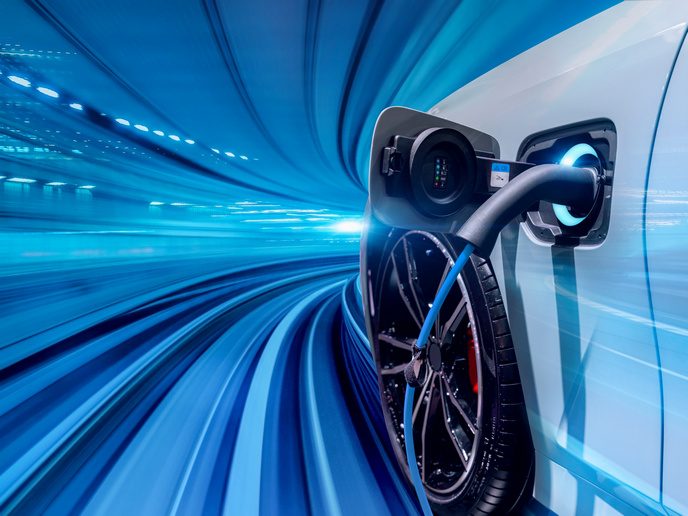Clean hydrogen production with bio-inspired catalysts
If hydrogen (H2) is to truly offer revolutionary clean energy solutions, its production must avoid greenhouse gas emissions, such as carbon dioxide (CO2). This is currently only possible if H2 is produced from water using electrolysis, using renewable electricity, or by photo(electro)catalysis, using sunlight. For the former, one clean H2 production technique uses proton-exchange membrane electrolysers (PEMELs) – devices that use electricity to split water molecules (H2O) into H2 and oxygen (O2) in an electrochemical process. The proton-exchange membranes (PEMs) are made of the synthetic polymer Nafion. The electrodes typically contain catalysts based on noble metals, i.e. iridium oxide to push the O2 evolution and platinum to produce H2. While the technology has been around for a while, these components are prohibitively expensive and the low abundance of noble metals in the Earth’s crust makes such technologies unsustainable. As an alternative, the PRODUCE-H2 (PROtotype Demonstration Using low-cost Catalysts for Electrolysis to H2) team supported by the European Research Council (ERC) developed innovative H2-producing catalysts based on Earth’s abundant elements.
Mimicking photosynthesis
PRODUCE-H2 built on the results of an earlier project, photocatH2ode, which had developed materials to convert sunlight directly into H2 fuel, inspired by the way micro-algae produce H2 for energy using sunlight. The previous ERC project, photocatH2ode, developed photoelectrodes which combined light-harvesting materials – including organic dyes, conducting polymers and semiconductors – with H2-producing catalysts inspired by hydrogenase enzymes. “We integrated photocathodes into complete photoelectrochemical cells, able to use sunlight to split water and produce H2,” says principal investigator Vincent Artero from the French Alternative Energies and Atomic Energy Commission (CEA). During photocatH2ode, the team discovered that the molecular structure of amorphous molybdenum sulfide – an electrocatalyst for H2 production – could be readily manipulated to enhance performance and stability. Additionally, molybdenum had the advantage of being abundantly available. In PRODUCE-H2, various composite materials, derived from amorphous molybdenum sulfide catalysts, were formulated into catalytic inks using a patent-pending technique. These electrocatalysts were then tested in PEMELs. “This was the first time that non–precious metal catalysts were tested in this way. Some of the materials displayed very good stability and reasonable activity, compared to platinum,” explains Artero. After testing various catalyst manufacturing methods, the team found that a synthesis method with cheap precursors and using a microwave oven, rapidly produced the most active and stable materials. “This method is easily scalable and life cycle analysis, in collaboration with Toyota Motor Europe (which produces H2-powered cars), indicated the environmental effects and cost benefit of such catalysts compared to noble-metal catalysts,” says Artero.
Towards a hydrogen economy
The PRODUCE-H2 team are now working to finalise the development of a PEM electrolyser prototype, founded on bio-based plastics and using additive manufacturing. To further advance the work, the team intend to combine their H2-producing catalyst with other non-precious metal catalysts. They especially want to find a means to replace O2-producing iridium oxide with a more sustainable catalyst – a more complex challenge. “We also want to integrate these catalysts into our bioplastic PEMEL prototype and to couple this with a photovoltaic cell to produce H2 from sunlight and water. This alternative method for H2 generation could prove more competitive than photoelectrocatalysis in the short term,” adds Artero. PRODUCE-H2’s results could help decarbonise the energy, transportation and industry systems contributing to the development of a hydrogen economy, affording the EU more energy independence and security by reducing reliance on imported fossil fuels.
Keywords
PRODUCE-H2, hydrogen, H2, emissions, energy, catalyst, electrolyser, membrane, sunlight, molybdenum, metal







